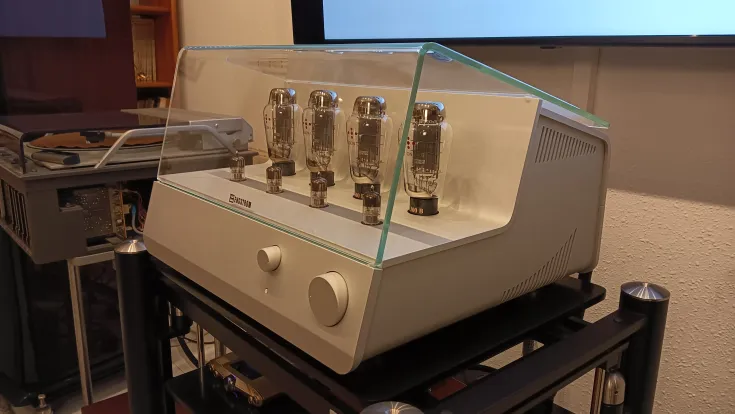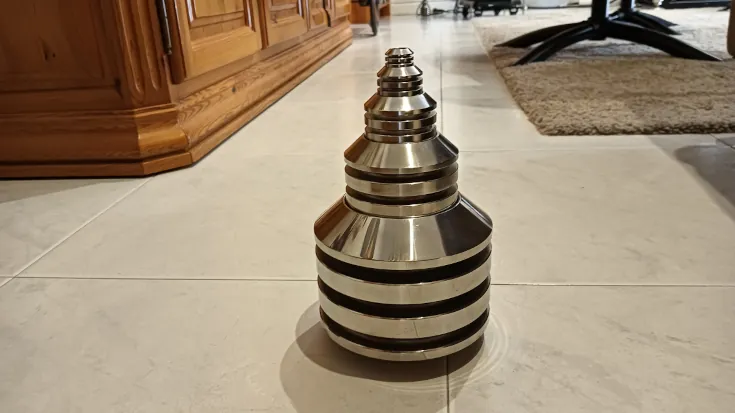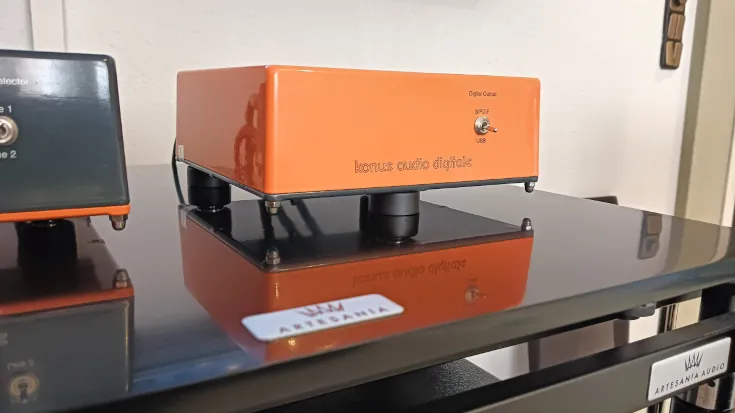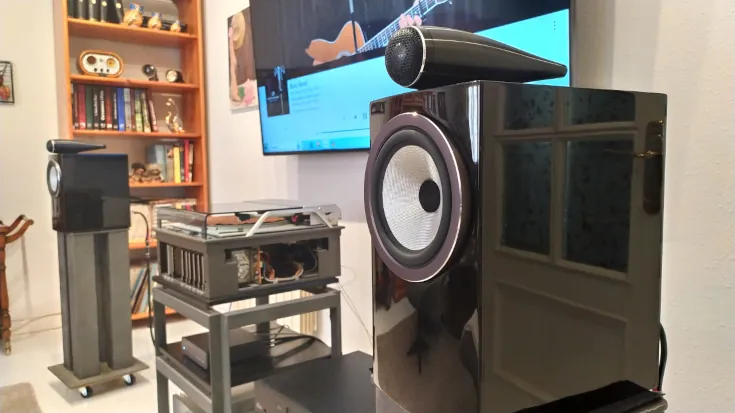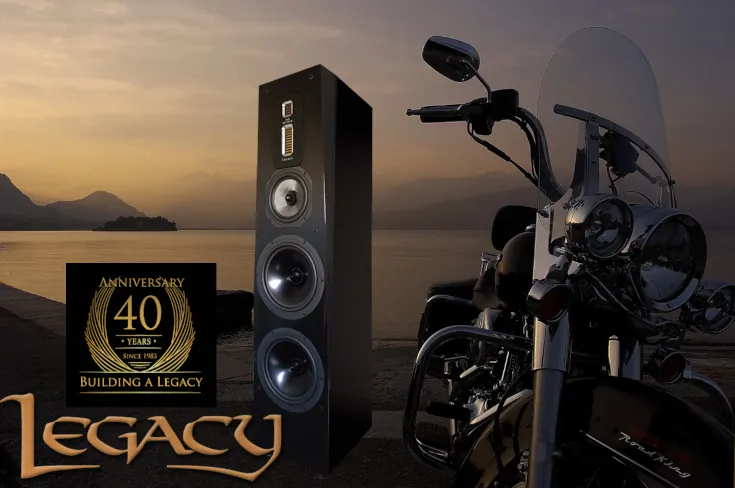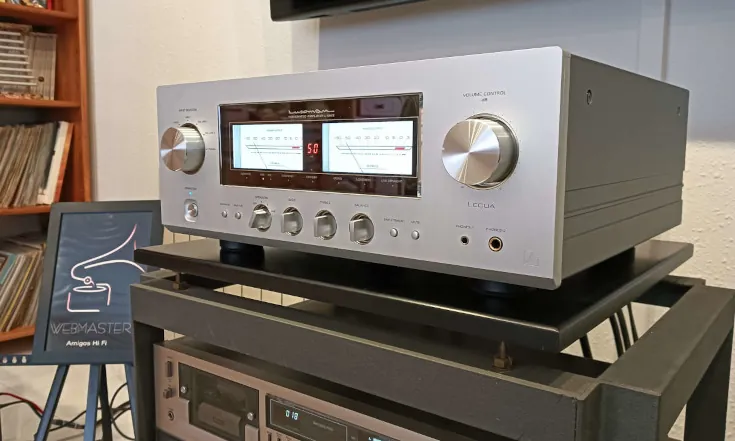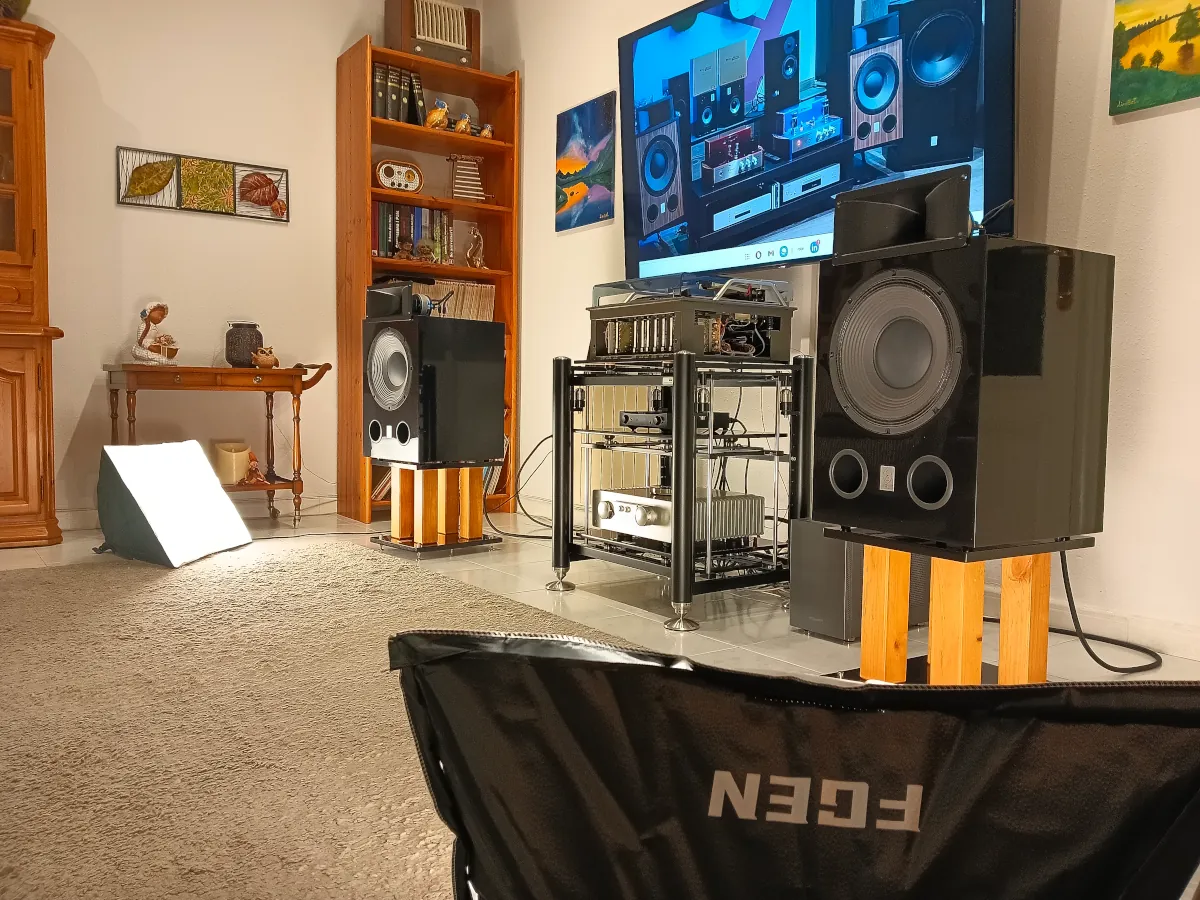
for this reason, the final satisfaction was all the more enjoyable.
At a busy time in my working life, I received a call from Carlos Perujo, the driving force behind the company that bears his name, Perujo Audio, offering me the chance to try out some speakers with an unusual name, Tokonoma. My first reaction was to decline the offer, but when I received photos of the product via WhatsApp, I rearranged my schedule as best I could and decided to go ahead. For various reasons, the shipment was delayed and we started to stress about the deadlines. But first, a little history about the name.
Tokonoma
According to the definition in Wikipedia: "A tokonoma is a cubicle or small space raised above a washitsu, a Japanese-style room with tatami flooring, where decorative scrolls with paintings (kakemono) are hung." But these speakers do not owe their name exactly to this, but to another twist of fate. Carlos received a request for a custom-made product for a record label based in Madrid, following their specifications. With the finished product and satisfaction with the result, it was decided to create a commercial line of the same. Incidentally, the studios in question are called Tokonoma Records. Everything is clear now.
Tokonoma by Perujo Audio is a two-way, two-piece loudspeaker. The main bass cabinet, with a capacity of approximately 85 liters, houses a 12-inch driver and two bass reflex ports. Looking over the transducer manufacturer's technical specifications regarding the recommended enclosure, you could say that they have sought larger dimensions to avoid a certain internal compression effect, which they have undoubtedly managed to avoid correctly. Another issue to consider with such large drivers in domestic environments is their sensitivity. Low sensitivity in these dimensions requires enormous amounts of power. This is not the case here, as its 95 dB (or 96) makes it extremely easy to use with any type of amplification, including tube amplifiers, which are normally not very efficient in this area.
At the top, a 1" neodymium compression driver is combined with a compact cast aluminum horn or exponential horn. It connects to the main box via Wires4Music jumpers. With a maximum power of 700 W AES, 8 ohm impedance and a compensated second-order two-way crossover filter. The finish can be customized. In my case, the one that arrived at my house is in shiny polished metallic paint.
A bit of parallel history
When Amigos HiFi became active again after a few years of silence, the pandemic had us all locked up at home and many projects were conceived in those less than desirable circumstances. Shortly afterwards, Carlos contacted Manel Segarra to tell him about his new project. He told me about it and we started a good relationship that has lasted for years.
I have always wanted to give space to new voices on the market. And I will continue to do so over time.
From a sad moment to deep embarrassment
After installing the speakers and listening to them in a thousand different ways, the sound they produced was so poor and lacking in quality that I was forced to call Carlos to tell him. It was a sad, very sad moment for me. We talked, we went over the measurements he had obtained, which I was reading while talking to him about the transducer manufacturer, and nothing made sense. Carlos asked me to check all the connections carefully, although we didn't rule out a problem during transport. That's how we left it.
The next day, I got to work. Everything was fine with the speakers, everything was fixed and correct. When I approached the rack to check that the cables were properly connected to the amplifier, I wanted to die. The cables on one of the speakers were connected backwards. I just looked and saw it. Those are the moments you want to erase from your memory and from existence. Keep quiet and forget.
But I prefer to make it public and say that we made a mistake. People who write or make videos make mistakes, we err and screw up like everyone else. It had never happened to me before, but now I'm glad it did. It reminds me that I must never let my guard down, because mistakes are lurking and waiting for the best moment to appear.
Equipment used in testing
Sound source:
» EMT 948
» Nuprime DAC 9X
» Roon Server
» Qobuz Studio
Power amplification:
» Bow Technologies WAZOO XL
Speakers:
» Perujo Audio Tokonoma
Cables:
» Wires4Music in wiring:
» Horus Hybrid RCA interconnection
» Evolution on speakers and mains
HiFi rack:
» Artesanía Audio Exoteryc Rack PRO
Sound in words
Tokonoma has two main elements that greatly influence the sound produced by the set. Let's start with the high-sensitivity 12" Beyma transducer with a cellulose membrane and a 4" central midrange. The membrane weighs 102 grams. More experienced readers will already know that we are talking about a "warmer" and less dry sound than other semi-rigid membrane materials. This allows the bass and midrange to coexist in balance in the same transducer. Although its size may detract somewhat from the speed of the midrange, this is compensated to a certain extent by the body provided by its generous low-frequency response.
On the other hand, we have a 1" neodymium motor connected directly to an exponential cast aluminum horn. The main feature I have experienced with this is a linearity of sound that has surprised me. I really mean it. Small, tiny movements from the exact linearity produce incredible sound variations. For this reason, I took the liberty of suggesting to the manufacturer that they build some kind of structure to guarantee immaculate perfection and thus not lose any of the details of their product. Although I was late in suggesting this, Carlos already has something like this in mind and is finishing up studying what might be the most suitable option.
But let me get back to the issue of aligning the bass box with the horn. In three-way models, mainly, I have "played" with the position of the upper box in relation to the lower one, to achieve better sound integration in small rooms. I tried it out with some Verus Canor Prima speakers at home, and with their spiritual inspiration, Wilson Audio WATT/Puppy speakers at someone else's house. The result was positive in small rooms, moving a few degrees inward, closing the soundstage, and keeping it more open in the bass.
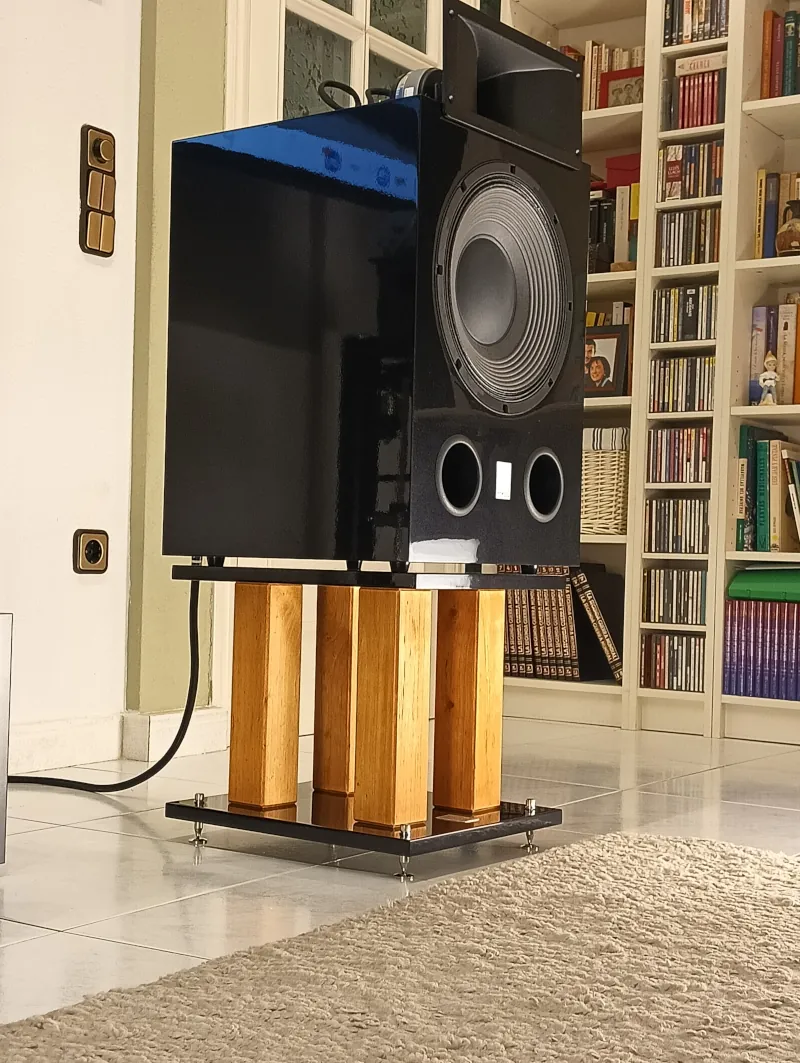
I am not an engineer, I am just an amateur listener, so I am not going to preach because some things work and others don't, although in this case, Tokonoma, I insist, the two sound sources must be kept in exact linearity, without any error.

At this point, I admit that I still didn't have a clear idea of where to mentally place the sound I was hearing. As always in these cases, a random piece of music playing at home gave me the idea. I'm talking about Vangelis and his "Conquest of Paradise" from the monumental masterpiece "1492."
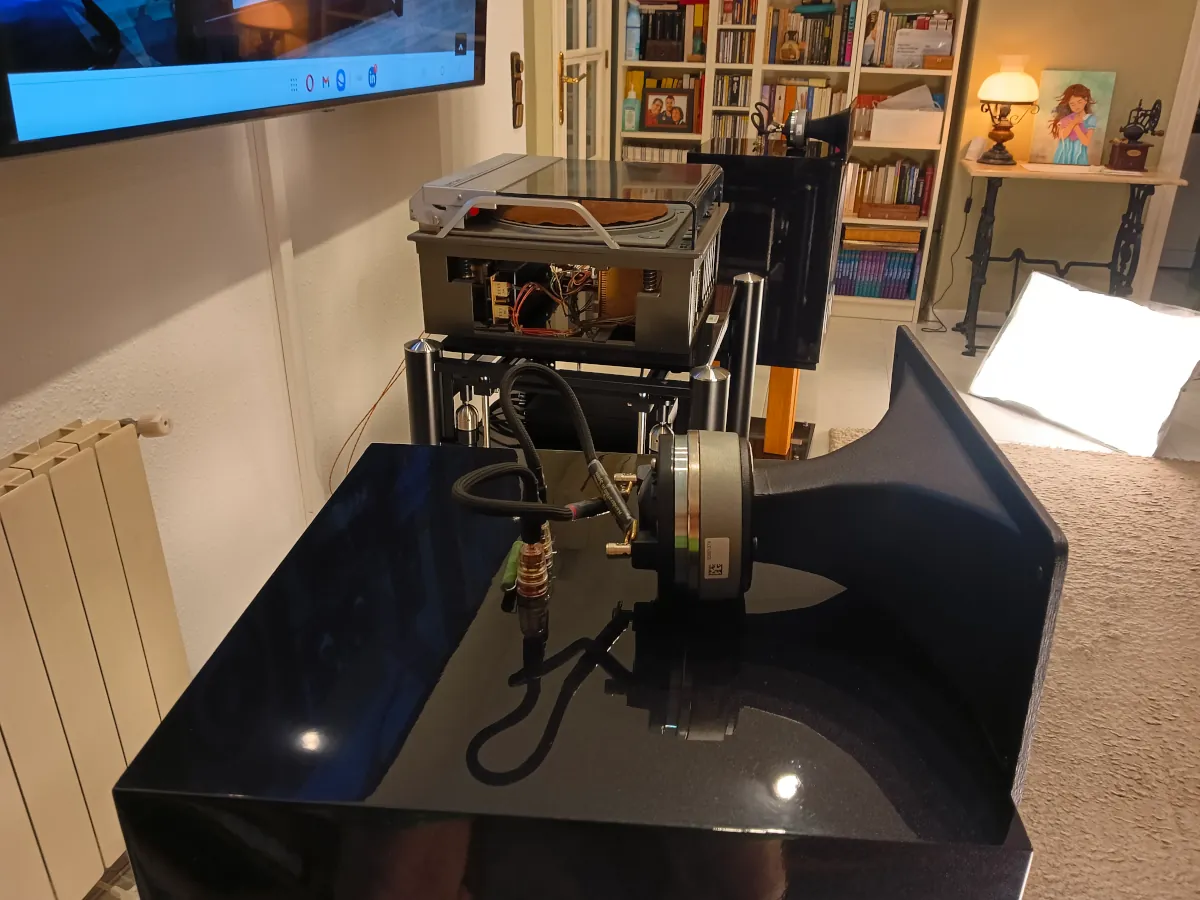
I turned the amplifier volume down as low as possible and listened carefully, repeating the same operation late at night with my family resting nearby. It was clear to me. Tokonoma has a professional sound response rather than a domestic one. This is neither good nor bad; it is simply a characteristic. To put it briefly, the sound curve adjusts and balances as we increase the volume. That's why I was so confused. My way of understanding music is through its presence in the room, not through it being projected towards me. At the beginning of this article, I mentioned Manel Segarra. We both have enough experience to chat and comment on the merits of this or that system, but at the same time we don't agree on our personal tastes. He is a fan of musical immersion and projection towards the listener. In my case, I prefer to be in the seating area and let the music live and exist on stage, rather than me being inside it. That's why Manel is more Tokonoma than me.
With the volume set unusually high for me, but normal for most mortals who are into this, I begin to enjoy the qualities of the product more. First and foremost, I notice the control and smoothness of the system's high frequencies. When you see the aluminum exponential in front of you, you think you're going to suffer from excessive metallic sound, but that's not the case. Typical audiophile recordings, with extra-bright sounds to show off the responsiveness of the setup at that moment and more dedicated to showmanship than music (I don't like them at all), would not be the most highly rated. They are "valve-like" and convey more reality at the expense of fireworks. However, this assessment could change significantly with a possible replacement that any owner of these speakers can make. There is an interchangeable resistor, as in other speaker models, such as Magnepan, where the desired sound can be adjusted by changing the values, which is very easy to do.
The midrange is enjoyable when the sound is very present in the room, just like professional or concert systems. It is well adjusted and does not give the impression of uncontrolled bass, or worse, feedback from internal vibrations. The cabinet is oversized and adequately supports the large amount of air that moves, and the party is already underway.
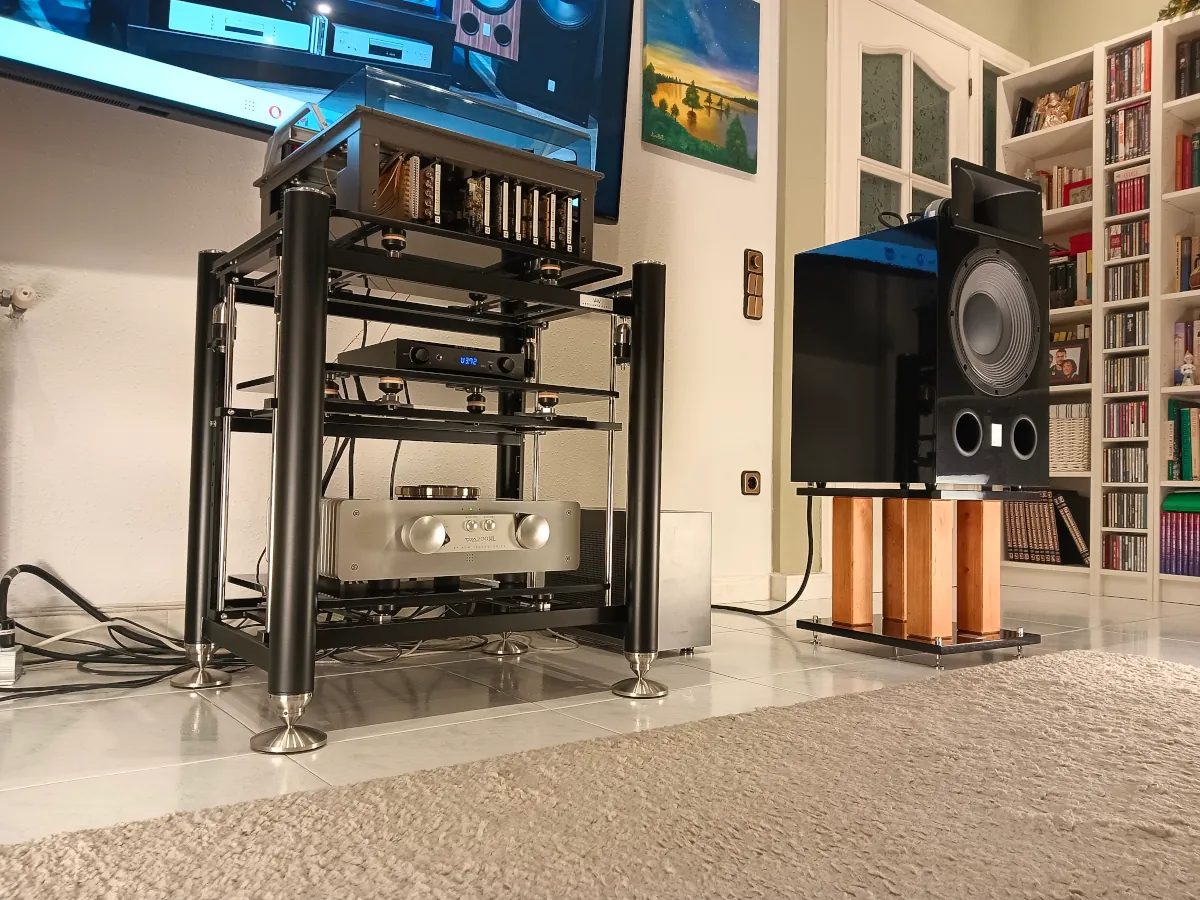
I don't want to finish without mentioning Carlos Perujo. He is 20 years younger than me and has all the energy in the world to take on any challenge. Tokonoma is the result of a challenge successfully overcome. Listening to some of the tracks on the record label of the same name, you understand that the tailor-made suit fits very well. I understand their satisfaction and I don't think there are many things better for them.
Final conclusions
Tokonoma are large, very large two-way speakers. They have a prominent visual presence in the room. Accompanied by their stands, they fill the same space as many three-way floorstanding speakers. Their finish can be customized, which means that integrating them into the room should not pose any major problems, apart from their size.
They require a lot of square footage, or alternatively, a properly treated room, as they perform best at high volumes and are not as prominent at low sound pressure levels. Their high sensitivity allows them to work well with limited power amplifiers, such as tube amplifiers.
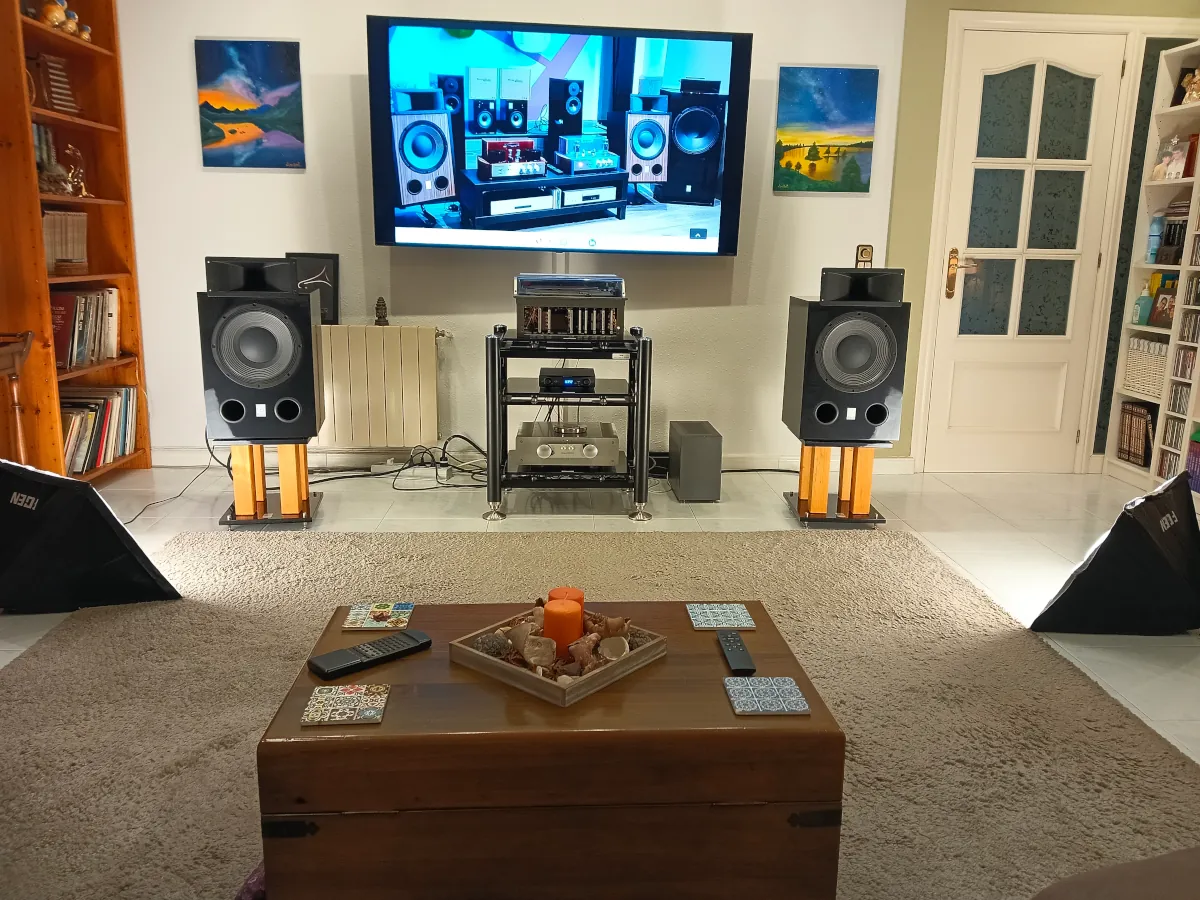
I have been able to talk to people who have experienced these Class D amplified speakers. Their comments are good, although I can only mention them and cannot vouch for them, as I have not been able to try them out.
I recommend listening to them, as they have a particular, defined sound signature that you may or may not like. It is not a neutral, bland sound. It will have its admirers and detractors. You know, red pill or blue pill?
| Manufacturer's website | Perujo Audio |
| Distributor's website | Perujo Audio |
| Price | €3999 |
| Technical Specifications | |
| User Manual |
| Manufacturer's website | Perujo Audio |
| Distributor's website | Perujo Audio |
| Price | Not determined |
| Technical Specifications | |
| User Manual |
More review
-
-
Unison Research S6 Black Edition, the golden divo
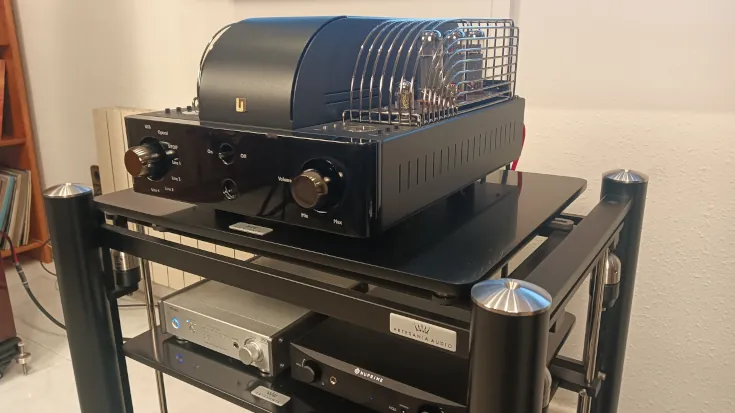
It exudes power and at the same time is very easy to control.
-
Marantz SA-10, the reference
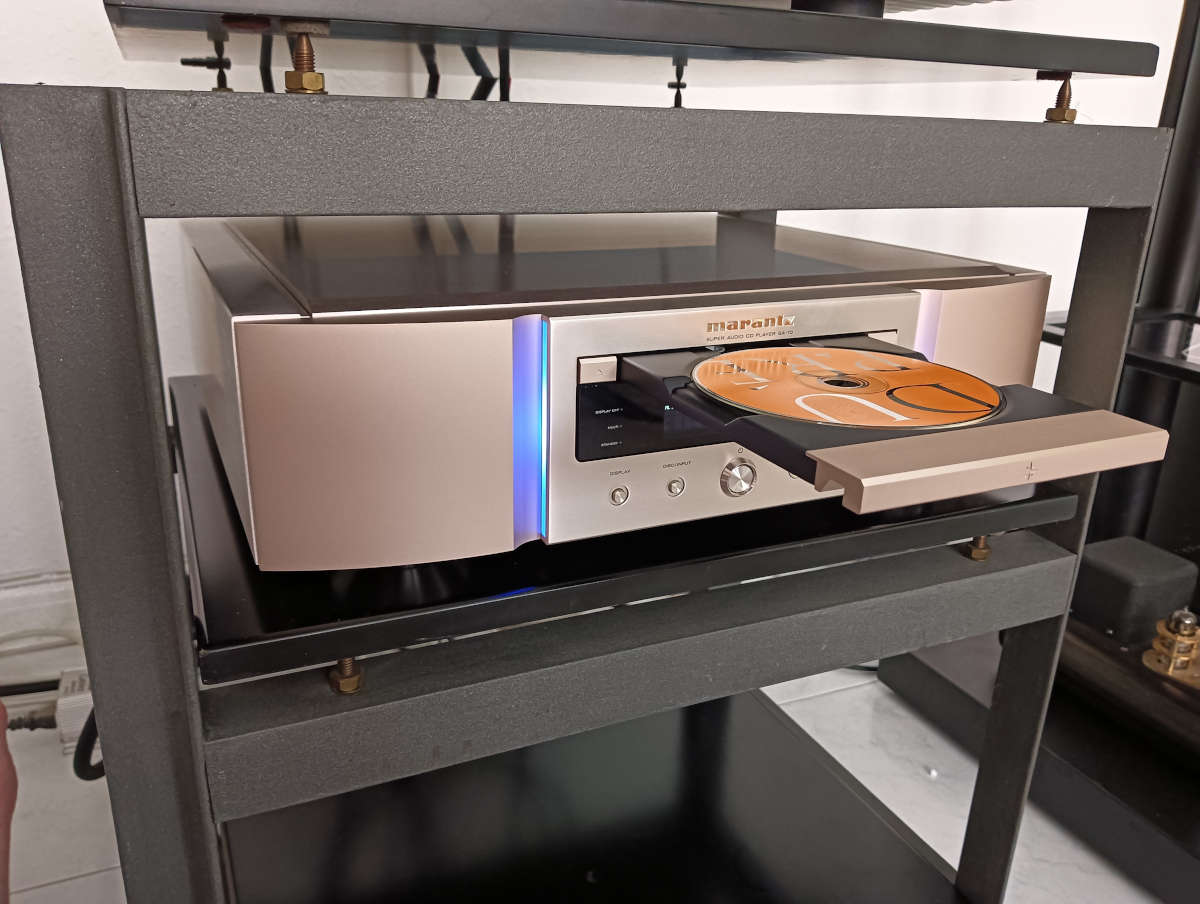
The intelligent manipulation of the digital sound signal is a step forward, not a step back.







